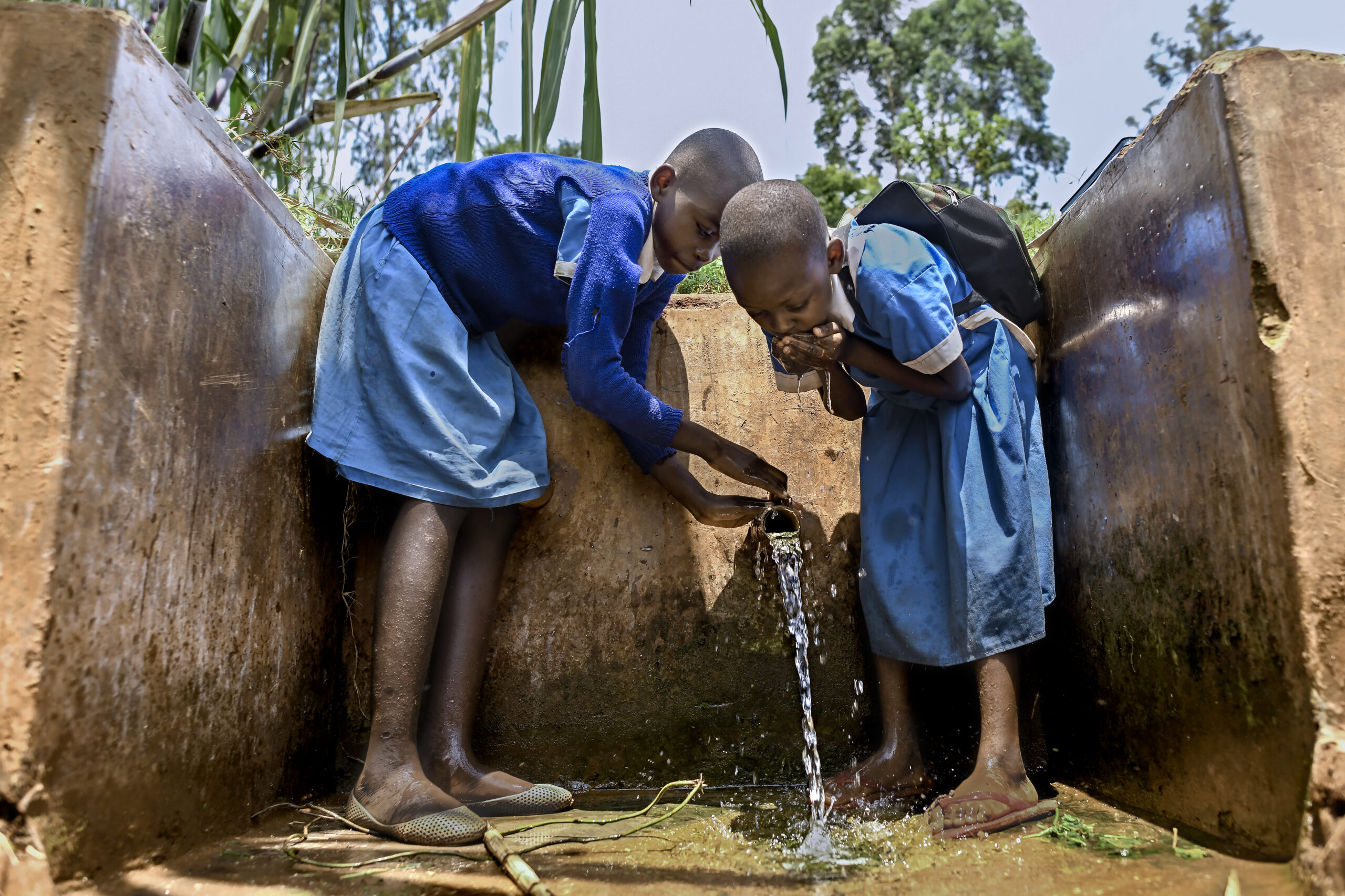
Drug resistance: what is it and what can we do

School pupils Ashley and Liz stop on their way from school to drink and wash their faces with water from an aquifer that serves the domestic water needs for several homesteads at a rural village in Kenya. Sources for clean drinking water are essential to reduce the risk of disease. Photo: PATH/Anthony Karumba.
Drug resistance is a growing global health concern. As pathogens become less sensitive to antibiotics, the drug is less effective at treating a disease. This is prevalent throughout the world, but sub-Saharan Africa holds the highest burden, just as it holds a high burden of diarrheal disease. Unsurprisingly, they share common causes and solutions.
A recent African Union report shared new findings detailing the phenomenon of expanding drug resistance in the Continent. It is exasperated by a multitude of compounding factors, such as challenges providing vaccination and water, sanitation, and hygiene (WASH) coverage alongside overuse of antibiotics, limited surveillance, and inadequate infection control.
Insufficient access to safe drinking water, appropriate latrines, and routine handwashing is linked to drug resistance is because it allows diseases to spread quickly and result in a higher transmission of germs. But with improved WASH access, fewer people will become sick, and fewer people will need treatment with antibiotic drugs. The lower the use of drugs, the slower the rate of resistance. As drug resistance continues to increase, investments in WASH offer a significant solution to reduce disease outbreaks.
In the same way that clean WASH reduces the spread of disease, vaccines also prevent illness and, therefore, reduce drug resistance. Immunization is one of the most effective tools to prevent individuals from becoming sick. Analogously, this means that fewer people will need antibiotic drugs for treatment. Investing in strong immunization systems to deliver those vaccines is an essential piece of the drug resistance puzzle.
While improved WASH and increased vaccination coverage decrease drug resistance, these factors are also crucial for good child health. Clean water and vaccines are an effective solution to defeat diarrheal (and other) diseases! Strong preventive health tools work to ensure kids are less likely to become sick in the first place, reducing the need for drug treatment, but also allowing them to grow and live their full potential.
Stay tuned next week as we explore what the drug resistance journey looks like for Shigella, a leading cause of childhood diarrhea!


